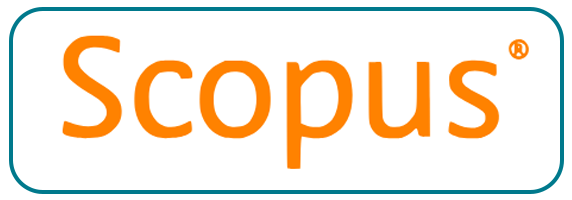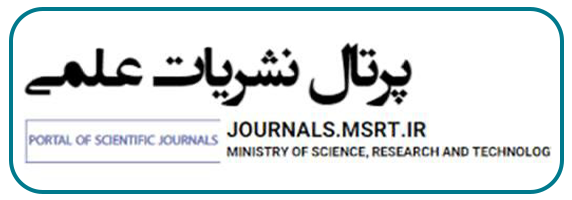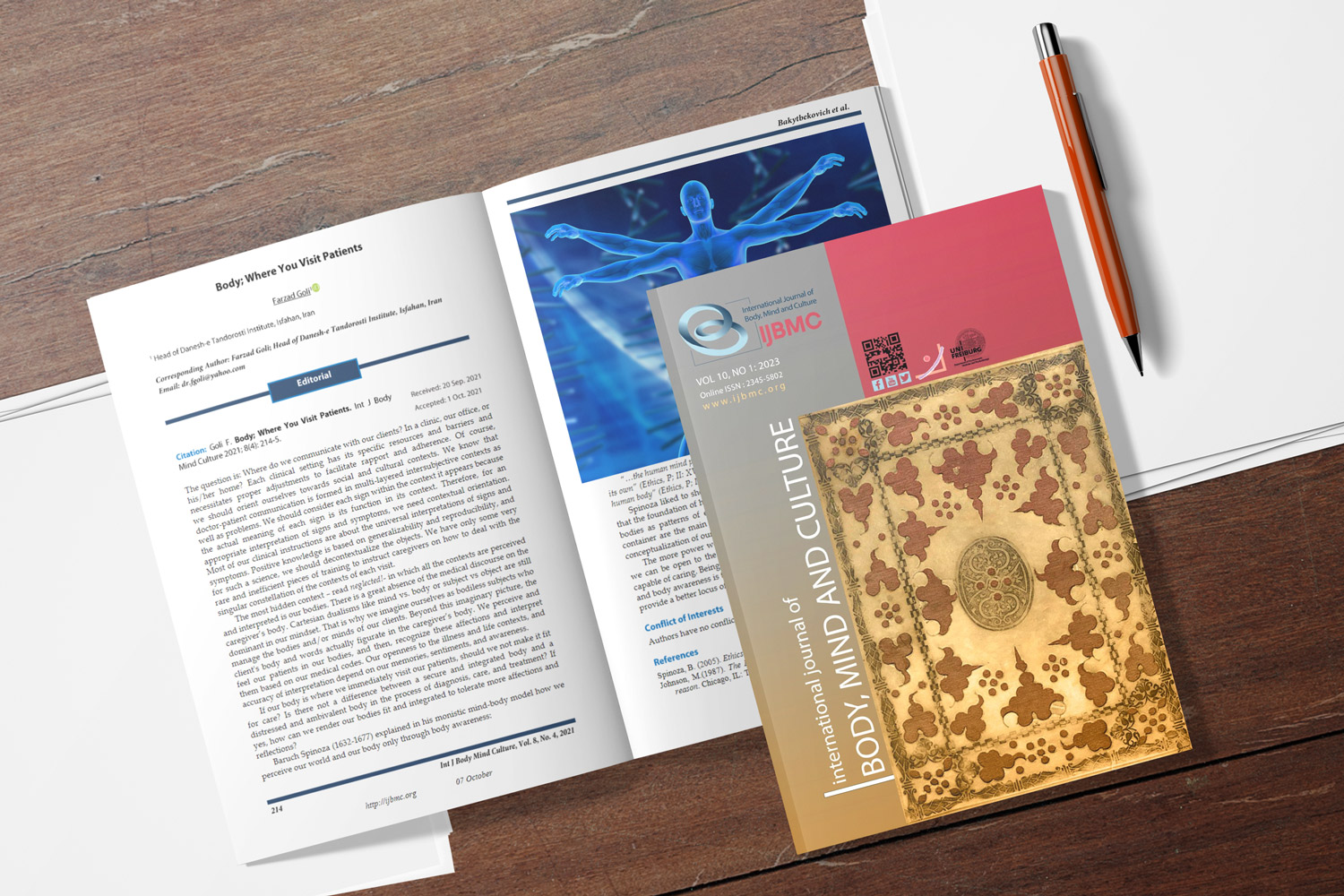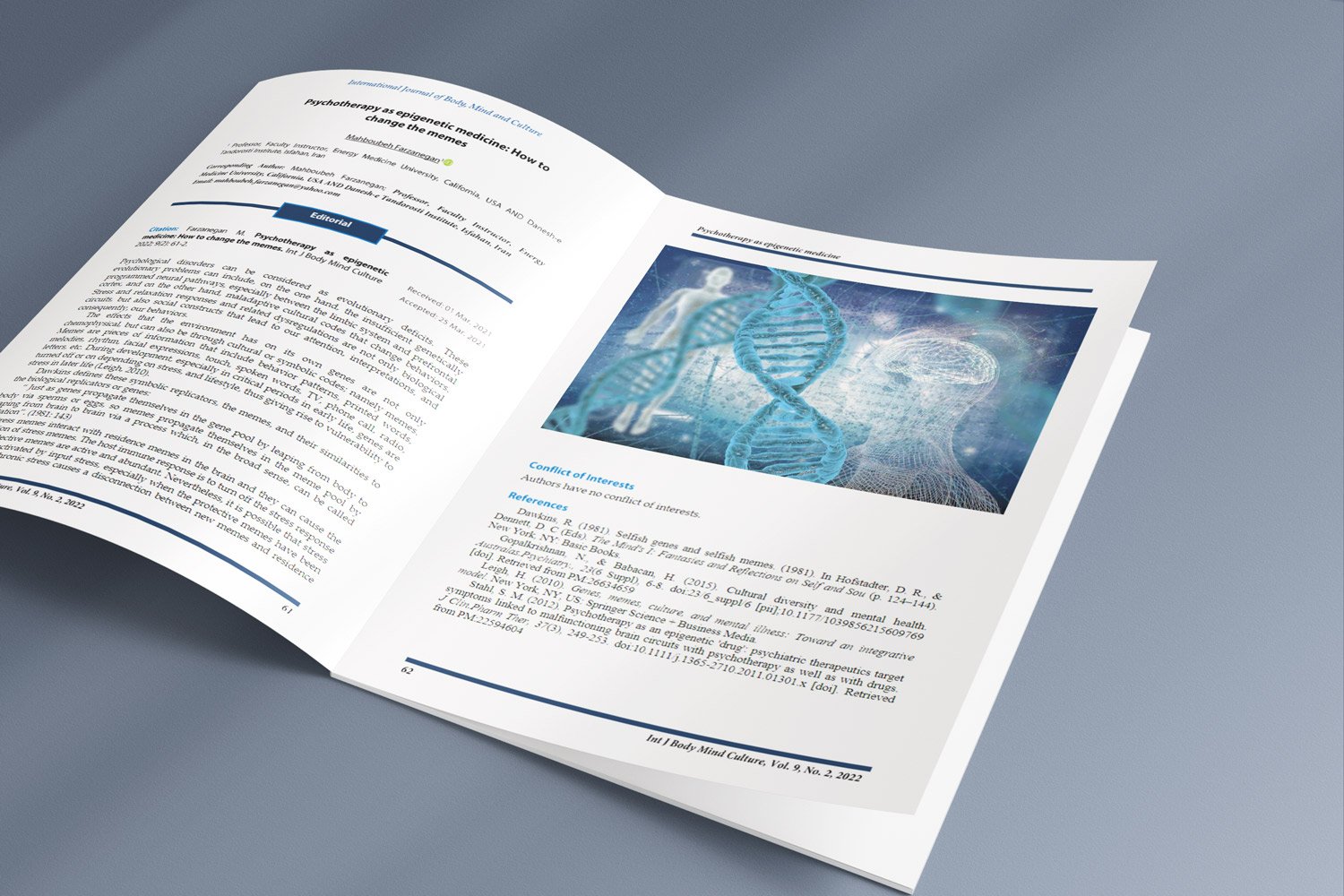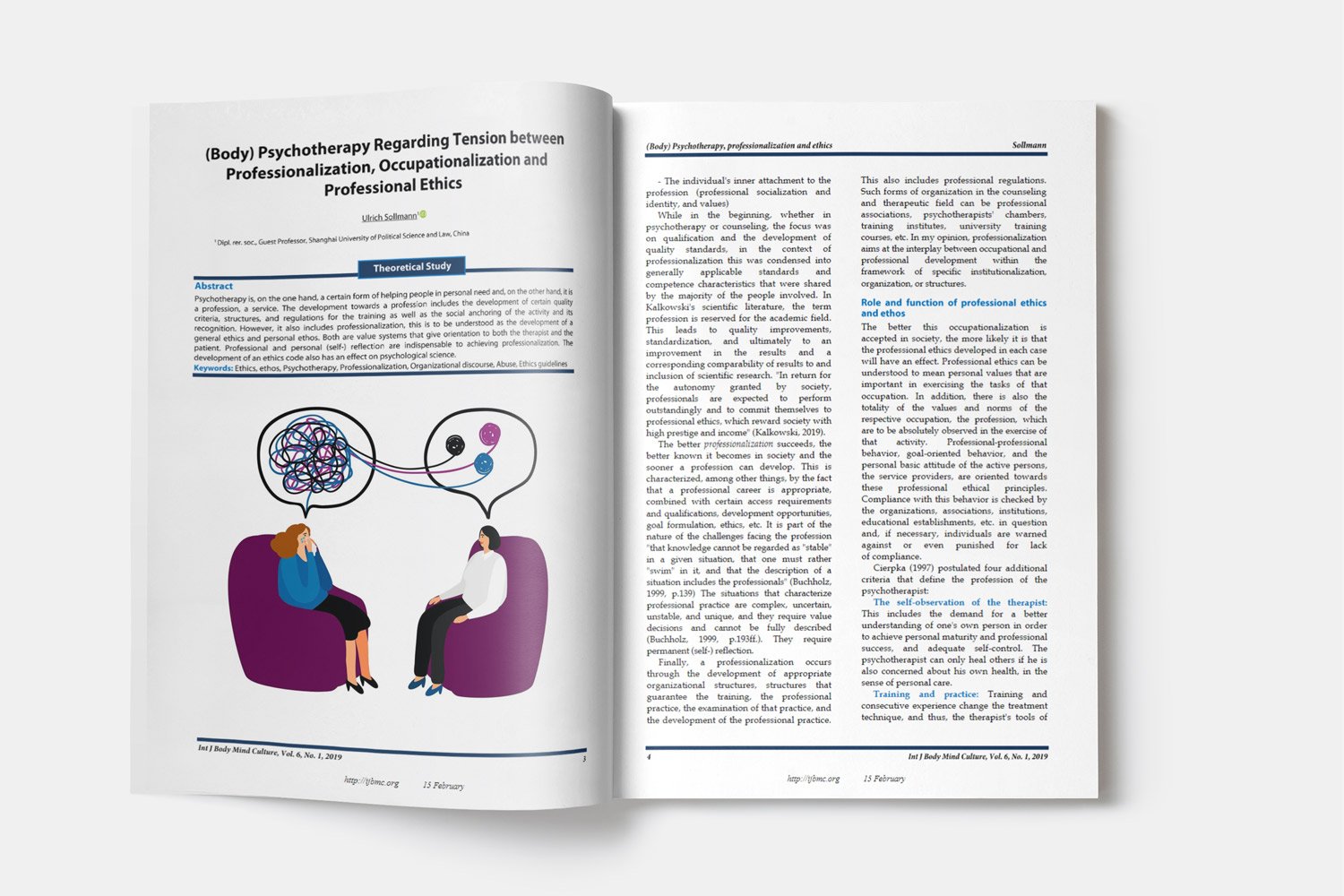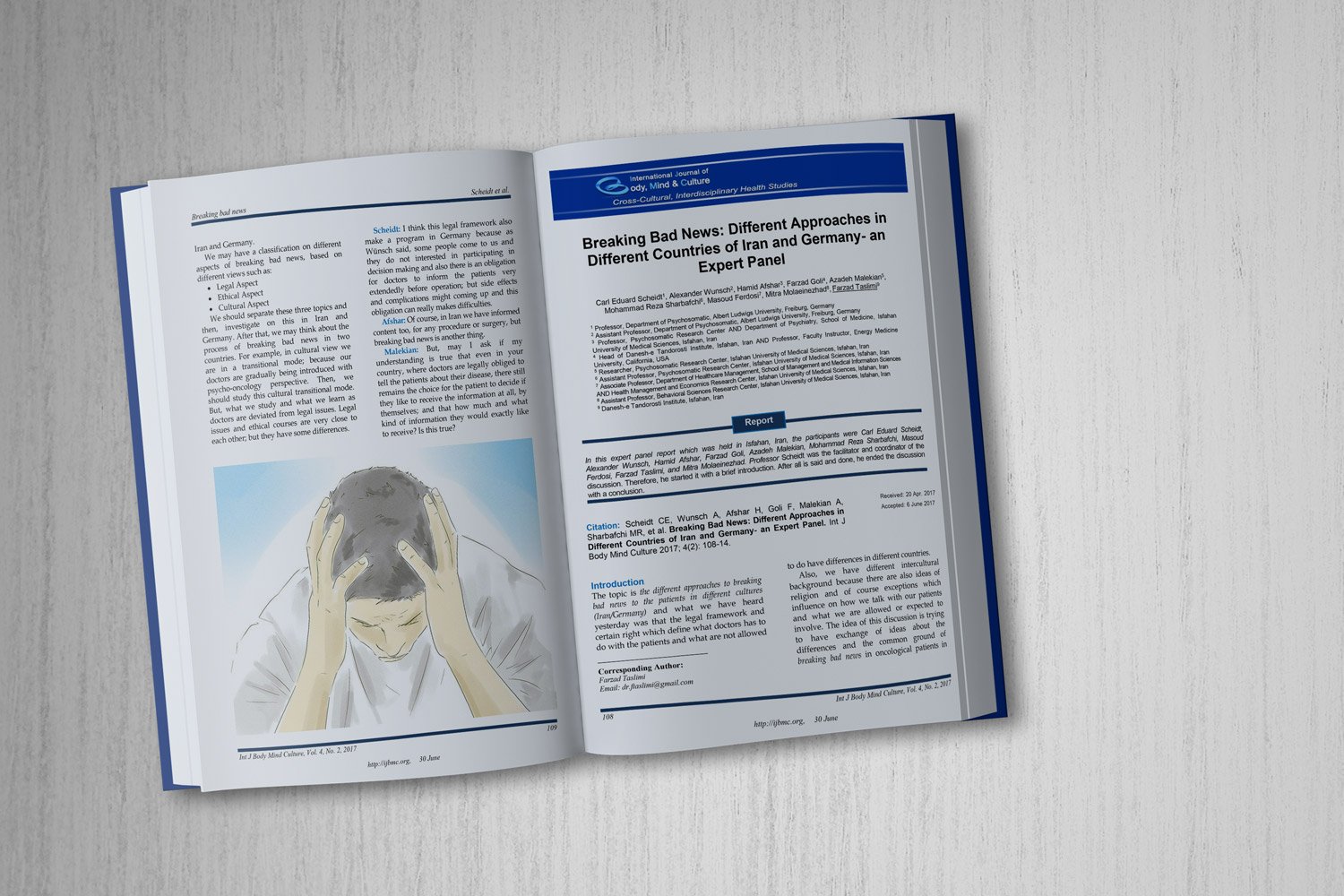Application of Neurofeedback in Treating Epilepsy: A Systematic Review and Meta-Analysis
Application of neurofeedback in treating epileps
Downloads
Background: To investigate the evidence related to the effectiveness of neurofeedback (NF) treatment in patients suffering from epilepsy, a meta-analysis of randomized controlled trials (RCTs) for people suffering from epilepsy was conducted in different research sources.
Methods: This research was conducted in accordance with the Preferred Reporting Items for Systematic Reviews and Meta-Analyses Protocols (PRISMA) guidelines and Meta-Analysis of Observational Studies in Epidemiology (MOOSE) guidelines. Original research studies that were published in valid electronic sources from March 1975 to March 2022 were included in the study; 15 original studies (including 330 patients) were finally analyzed. To achieve this objective, the primary outcome measure was the ratings of epilepsy symptoms in subjects based on assessments of patients. The Cambridge Neuropsychological Test Automated Battery (CANTAB), Wechsler Intelligence Scale for Children-Second Edition (WISC-II), and the Attention Span Test were regarded as primary outcomes. The required data from the desired studies were putted in the Review Manager Software to perform a systematic analysis of trial characteristics.
Results: The findings showed that the mean level had significantly dropped by about 4.064 units in the intervention group (MD = -0.4.064; 95% CI = [-4.909, -3.22]; P < 0.001). However, the mean difference was not statistically significant within the subgroups. No significant heterogeneity or publication bias was detected.
Conclusion: The results of the meta-analysis offer preliminary evidence that, based on the assessment of patients, NF is a beneficial clinical method for epilepsy. However, more RTCs are required to compare standard treatments such as medication, and neurological and behavioral interventions.
Downloads
Adhia, D. B., Mani, R., Mathew, J., O'Leary, F., Smith, M., Vanneste, S. et al. (2023). Exploring electroencephalographic infraslow neurofeedback treatment for chronic low back pain: A double-blinded safety and feasibility randomized placebo-controlled trial. Sci Rep., 13(1), 1177. doi:10.1038/s41598-023-28344-2 [pii];28344 [pii];10.1038/s41598-023-28344-2 [doi]. Retrieved from PM:36670176
Andrews, D. J., & Schonfeld, W. H. (1992). Predictive factors for controlling seizures using a behavioural approach. Seizure., 1(2), 111-116. doi:1059-1311(92)90008-O [pii];10.1016/1059-1311(92)90008-o [doi]. Retrieved from PM:1344325
Autenrieth, M., Kober, S. E., & Wood, G. (2022). Assessment of the capacity to modulate brain signals in a home-based SMR neurofeedback training setting. Front.Hum.Neurosci, 16, 1032222. doi:10.3389/fnhum.2022.1032222 [doi]. Retrieved from PM:36684842
Brogin, J. A. F., Faber, J., & Bueno, D. D. (2022). Estimating the parameters of the epileptor model for epileptic seizure suppression. Neuroinformatics., 20(4), 919-941. doi:10.1007/s12021-022-09583-6 [pii];10.1007/s12021-022-09583-6 [doi]. Retrieved from PM:35303252
Cott, A., Pavloski, R. P., & Black, A. H. (1979). Reducing epileptic seizures through operant conditioning of central nervous system activity: procedural variables. Science, 203(4375), 73-75. doi:10.1126/science.758682 [doi]. Retrieved from PM:758682
Czornik, M., Malekshahi, A., Mahmoud, W., Wolpert, S., & Birbaumer, N. (2022). Psychophysiological treatment of chronic tinnitus: A review. Clin.Psychol Psychother., 29(4), 1236-1253. doi:10.1002/cpp.2708 [doi]. Retrieved from PM:34994043
Davey, J., Turner, R. M., Clarke, M. J., & Higgins, J. P. (2011). Characteristics of meta-analyses and their component studies in the Cochrane Database of Systematic Reviews: A cross-sectional, descriptive analysis. BMC Med Res Methodol., 11, 160. doi:1471-2288-11-160 [pii];10.1186/1471-2288-11-160 [doi]. Retrieved from PM:22114982
Doyle, D. A. (2004). Structural changes during ion channel gating. Trends.Neurosci, 27(6), 298-302. doi:S0166-2236(04)00111-0 [pii];10.1016/j.tins.2004.04.004 [doi]. Retrieved from PM:15165732
Fleury, M., Figueiredo, P. C., Vourvopoulos, A., & Lécuyer, A. (2023). Two is better ? Combining EEG and fMRI for BCI and Neurofeedback: A systematic review. [Preprint].
Freeman, M. F., & Tukey, J. W. (1950). Transformations related to the angular and the square root. Ann. Math. Stat., 21(4), 607-611. doi: 10.1214/aoms/1177729756 [doi].
Frey, L. C., Koberda JL. (2015) LORETA Z-score Neurofeedback in Patients with Medically Refractory Epilepsy. J Neurol Neurobiol., 1.1, 1-4. doi: 10.16966/2379-7150.102 [doi].
Girges, C., Vijiaratnam, N., Zrinzo, L., Ekanayake, J., & Foltynie, T. (2022). Volitional control of brain motor activity and its therapeutic potential. Neuromodulation., 25(8), 1187-1196. doi:S1094-7159(22)00028-9 [pii];10.1016/j.neurom.2022.01.007 [doi]. Retrieved from PM:35241365
Goodman, R. (1997). The Strengths and Difficulties Questionnaire: A research note. J Child.Psychol Psychiatry., 38(5), 581-586. doi:10.1111/j.1469-7610.1997.tb01545.x [doi]. Retrieved from PM:9255702
Harris, R. J., Deeks, J. J., Altman, D. G., Bradburn, M. J., Harbord, R. M., & Sterne, J. A. C. (2008). Metan: Fixed- and random-effects meta-analysis. The Stata Journal, 8(1), 3-28. doi: 10.1177/1536867X0800800102 [doi].
Hesam-Shariati, N., Chang, W. J., Wewege, M. A., McAuley, J. H., Booth, A., Trost, Z. et al. (2022). The analgesic effect of electroencephalographic neurofeedback for people with chronic pain: A systematic review and meta-analysis. Eur.J Neurol., 29(3), 921-936. doi:10.1111/ene.15189 [doi]. Retrieved from PM:34813662
Josephson, C. B., Patten, S. B., Bulloch, A., Williams, J. V. A., Lavorato, D., Fiest, K. M. et al. (2017). The impact of seizures on epilepsy outcomes: A national, community-based survey. Epilepsia., 58(5), 764-771. doi:10.1111/epi.13723 [doi]. Retrieved from PM:28345152
Kang, J., Zhang, Z., Wan, L., Casanova, M. F., Sokhadze, E. M., & Li, X. (2022). Effects of 1Hz repetitive transcranial magnetic stimulation on autism with intellectual disability: A pilot study. Comput.Biol.Med, 141, 105167. doi:S0010-4825(21)00961-6 [pii];10.1016/j.compbiomed.2021.105167 [doi]. Retrieved from PM:34959111
Kaplan, B. J. (1975). Biofeedback in epileptics: equivocal relationship of reinforced EEG frequency to seizure reduction. Epilepsia., 16(3), 477-485. Retrieved from PM:1183423
Kerick, S. E., Asbee, J., Spangler, D. P., Brooks, J. B., Garcia, J. O., Parsons, T. D. et al. (2023). Neural and behavioral adaptations to frontal theta neurofeedback training: A proof of concept study. PLoS.One., 18(3), e0283418. doi:PONE-D-21-31557 [pii];10.1371/journal.pone.0283418 [doi]. Retrieved from PM:36952490
Khaksarian, M., Hasanvandi, S., Piri, R., & Sohrabifard, M. M. (2020). A Comparision of the Effect Neurofeedback on the Improvement of the Executive Functions of Individuals with ADHD and Epilepsy. Yafteh, 22(1), 13-24.
Kotchoubey, B., Strehl, U., Uhlmann, C., Holzapfel, S., Konig, M., Froscher, W. et al. (2001). Modification of slow cortical potentials in patients with refractory epilepsy: a controlled outcome study. Epilepsia., 42(3), 406-416. doi:10.1046/j.1528-1157.2001.22200.x [doi]. Retrieved from PM:11442161
Kuhlman, W. N., & Allison, T. (1977). EEG feedback training in the treatment of epilepsy: some questions and some answers. Pavlov.J Biol.Sci, 12(2), 112-122. doi:10.1007/BF03004498 [doi]. Retrieved from PM:904959
Lantz, D. L., & Sterman, M. B. (1988). Neuropsychological assessment of subjects with uncontrolled epilepsy: effects of EEG feedback training. Epilepsia., 29(2), 163-171. doi:10.1111/j.1528-1157.1988.tb04414.x [doi]. Retrieved from PM:3349967
Le Breton, C. (2022). Usability of phase synchrony neuromarkers in neurofeedback protocols for epileptic seizures reduction. Nice, France: Côte d'Azur University.
Lin, J. J., Mula, M., & Hermann, B. P. (2012). Uncovering the neurobehavioural comorbidities of epilepsy over the lifespan. Lancet., 380(9848), 1180-1192. doi:S0140-6736(12)61455-X [pii];10.1016/S0140-6736(12)61455-X [doi]. Retrieved from PM:23021287
Lubar, J. F., Shabsin, H. S., Natelson, S. E., Holder, G. S., Whitsett, S. F., Pamplin, W. E. et al. (1981). EEG operant conditioning in intractable epileptics. Arch Neurol., 38(11), 700-704. doi:10.1001/archneur.1981.00510110060009 [doi]. Retrieved from PM:7305698
Lubar, J. F., & Bahler, W. W. (1976). Behavioral management of epileptic seizures following EEG biofeedback training of the sensorimotor rhythm. Biofeedback Self Regul., 1(1), 77-104. doi:10.1007/BF00998692 [doi]. Retrieved from PM:825150
Lyle, R. R. (2022). Maurice Barry Sterman's Sensorimotor Rhythm Research Shaped Neurofeedback. Biofeedback, 50(4), 97-99.
Morales-Quezada, L., Martinez, D., El-Hagrassy, M. M., Kaptchuk, T. J., Sterman, M. B., & Yeh, G. Y. (2019). Neurofeedback impacts cognition and quality of life in pediatric focal epilepsy: An exploratory randomized double-blinded sham-controlled trial. Epilepsy Behav., 101(Pt A), 106570. doi:S1525-5050(19)30575-X [pii];10.1016/j.yebeh.2019.106570 [doi]. Retrieved from PM:31707107
Munn, Z., Moola, S., Lisy, K., & Riitano, D. (2014). The Systematic Review of Prevalence and Incidence Data. In Joanna Briggs Institute Reviewer's Manual 2014 Edition. Adelaide, South Australia: The Joanna Briggs Institute.
O'Donoghue, M., Leahy, S., Boland, P., Galvin, R., McManus, J., & Hayes, S. (2022). Rehabilitation of Cognitive Deficits Poststroke: Systematic Review and Meta-Analysis of Randomized Controlled Trials. Stroke., 53(5), 1700-1710. doi:10.1161/STROKEAHA.121.034218 [doi]. Retrieved from PM:35109684
Patil, A. U., Lin, C., Lee, S. H., Huang, H. W., Wu, S. C., Madathil, D. et al. (2023). Review of EEG-based neurofeedback as a therapeutic intervention to treat depression. Psychiatry.Res Neuroimaging, 329, 111591. doi:S0925-4927(23)00001-X [pii];111591 [pii];10.1016/j.pscychresns.2023.111591 [doi]. Retrieved from PM:36682174
Quy, R. J., Hutt, S. J., & Forrest, S. (1979). Sensorimotor rhythm feedback training and epilepsy: some methodological and conceptual issues. Biol.Psychol, 9(2), 129-149. doi:0301-0511(79)90059-0 [pii];10.1016/0301-0511(79)90059-0 [doi]. Retrieved from PM:540111
Rahmani, E., Mahvelati, A., Alizadeh, A., Mokhayeri, Y., Rahmani, M., Zarabi, H. et al. (2022). Is neurofeedback effective in children with ADHD? A systematic review and meta-analysis. Neurocase., 28(1), 84-95. doi:10.1080/13554794.2022.2027456 [doi]. Retrieved from PM:35068368
Riahi, S. M., & Mokhayeri, Y. (2017). Methodological issues in a meta-analysis. Curr Med Res Opin., 33(10), 1813. doi:10.1080/03007995.2017.1359152 [doi]. Retrieved from PM:28749239
Rotondo, E., Riva, A., Graziosi, A., Pellegrino, N., Di Battista, C., Di Stefano, V. et al. (2022). Non-pharmacological treatments for pediatric refractory epilepsies. Expert.Rev.Neurother., 22(4), 337-349. doi:10.1080/14737175.2022.2057847 [doi]. Retrieved from PM:35320056
Russo, G. M., Balkin, R. S., & Lenz, A. S. (2022). A meta-analysis of neurofeedback for treating anxiety spectrum disorders. J Couns. Dev., 100, 236-251. doi:10.1002/jcad.12424 [doi].
Sadeghijam, M., Moossavi, A., Akbari, M., Yousefi, A., & Haghani, H. (2022). Effect of tinnitus distress on auditory steady-state response amplitudes in chronic tinnitus sufferers. J Clin.Neurosci, 97, 49-55. doi:S0967-5868(21)00562-2 [pii];10.1016/j.jocn.2021.11.014 [doi]. Retrieved from PM:35033781
Seifert, A. R., & Lubar, J. F. (1975). Reduction of epileptic seizures through EEG biofeedback training. Biol.Psychol, 3(3), 157-184. doi:0301-0511(75)90033-2 [pii];10.1016/0301-0511(75)90033-2 [doi]. Retrieved from PM:812560
Seok, C. B. (2022). Neurofeedback (NFB) Training in Aspergers. Borneo Journal of Medical Sciences (BJMS), 16(1), 49-56.
Sho'ouri, N. (2023). Hard boundary-based neurofeedback training procedure: A modified fixed thresholding method for more accurate guidance of subjects within target areas during neurofeedback training. Clin.EEG.Neurosci, 54(3), 228-237. doi:10.1177/15500594221100159 [doi]. Retrieved from PM:35686319
Souza, S. C., Navegantes, R. E. S., Miranda, D. S., Fiel, J. S., & Pereira, A. (2022). Neurofeedback training for regulation of sensorimotor rhythm in individuals with refractory epilepsy. In T. F. Bastos-Filho, E. M. de Oliveira Caldeira, & A. Frizera-Neto (Eds.). XXVII Brazilian Congress on Biomedical Engineering (pp. 2189-2192) Cham, Switzerland: Springer International Publishing.
Sterman, M. B., & Macdonald, L. R. (1978). Effects of central cortical EEG feedback training on incidence of poorly controlled seizures. Epilepsia., 19(3), 207-222. doi:10.1111/j.1528-1157.1978.tb04483.x [doi]. Retrieved from PM:354919
Sterman, M. B., & Egner, T. (2006). Foundation and practice of neurofeedback for the treatment of epilepsy. Appl.Psychophysiol.Biofeedback, 31(1), 21-35. doi:10.1007/s10484-006-9002-x [doi]. Retrieved from PM:16614940
Strehl, U., Birkle, S. M., Worz, S., & Kotchoubey, B. (2014). Sustained reduction of seizures in patients with intractable epilepsy after self-regulation training of slow cortical potentials - 10 years after. Front.Hum.Neurosci, 8, 604. doi:10.3389/fnhum.2014.00604 [doi]. Retrieved from PM:25152725
Thompson, M., & Thompson, L. (2009). Asperger’s syndrome intervention: Combining neurofeedback, biofeedback and metacognition. In T.H. Budzynski, H. K. Budzynski, J. R. Evans, & A. Abarbanel (Eds.), Introduction to Quantitative EEG and Neurofeedback (2nd ed) (pp. 365-415). San Diego, CA: Academic Press.
Tozzo, C. A., Elfner, L. F., & May, J. G. (1988). EEG biofeedback and relaxation training in the control of epileptic seizures. Int J Psychophysiol., 6(3), 185-194. doi:0167-8760(88)90004-9 [pii];10.1016/0167-8760(88)90004-9 [doi]. Retrieved from PM:3136105
Turner, R. P., Wilson, V. E., Gunkelman, J. D., Harvison, A. A., & Walker, L. A. (2023). Intractable epilepsy controlled by neurofeedback and adjunctive treatments: A case report. NeuroRegulation, 10(1), 21-30. doi: 10.15540/nr.10.1.21 [doi].
Walker, J. E., & Kozlowski, G. P. (2005). Neurofeedback treatment of epilepsy. Child.Adolesc.Psychiatr.Clin.N.Am., 14(1), 163-76, viii. doi:S1056-4993(04)00072-0 [pii];10.1016/j.chc.2004.07.009 [doi]. Retrieved from PM:15564057
Weber, E., Koberl, A., Frank, S., & Doppelmayr, M. (2011). Predicting successful learning of SMR neurofeedback in healthy participants: methodological considerations. Appl.Psychophysiol.Biofeedback, 36 (1), 37-45. doi:10.1007/s10484-010-9142-x [doi]. Retrieved from PM:21053066
White, R. D., Turner, R. P., Arnold, N., Bernica, A., Lewis, B. N., & Swatzyna, R. J. (2022). Treating Severe Traumatic Brain Injury: Combining Neurofeedback and Hyperbaric Oxygen Therapy in a Single Case Study. Clin.EEG Neurosci, 53(6), 519-531. doi:10.1177/15500594211068255 [doi]. Retrieved from PM:34931544
Yonah, R. (2023). In Neurofeedback Training, Harder is Not Necessarily Better: The Power of Positive Feedback in Facilitating Brainwave Self-Regulation. NeuroRegulation, 10(1), 31-41. doi:10.15540/nr.10.1.31 [doi].
Zafarmand, M., Farahmand, Z., & Otared, N. (2022). A systematic literature review and meta-analysis on effectiveness of neurofeedback for obsessive-compulsive disorder. Neurocase., 28(1), 29-36. doi:10.1080/13554794.2021.2019790 [doi]. Retrieved from PM:35253624
Copyright (c) 2023 International Journal of Body, Mind and Culture

This work is licensed under a Creative Commons Attribution-NonCommercial 4.0 International License.

